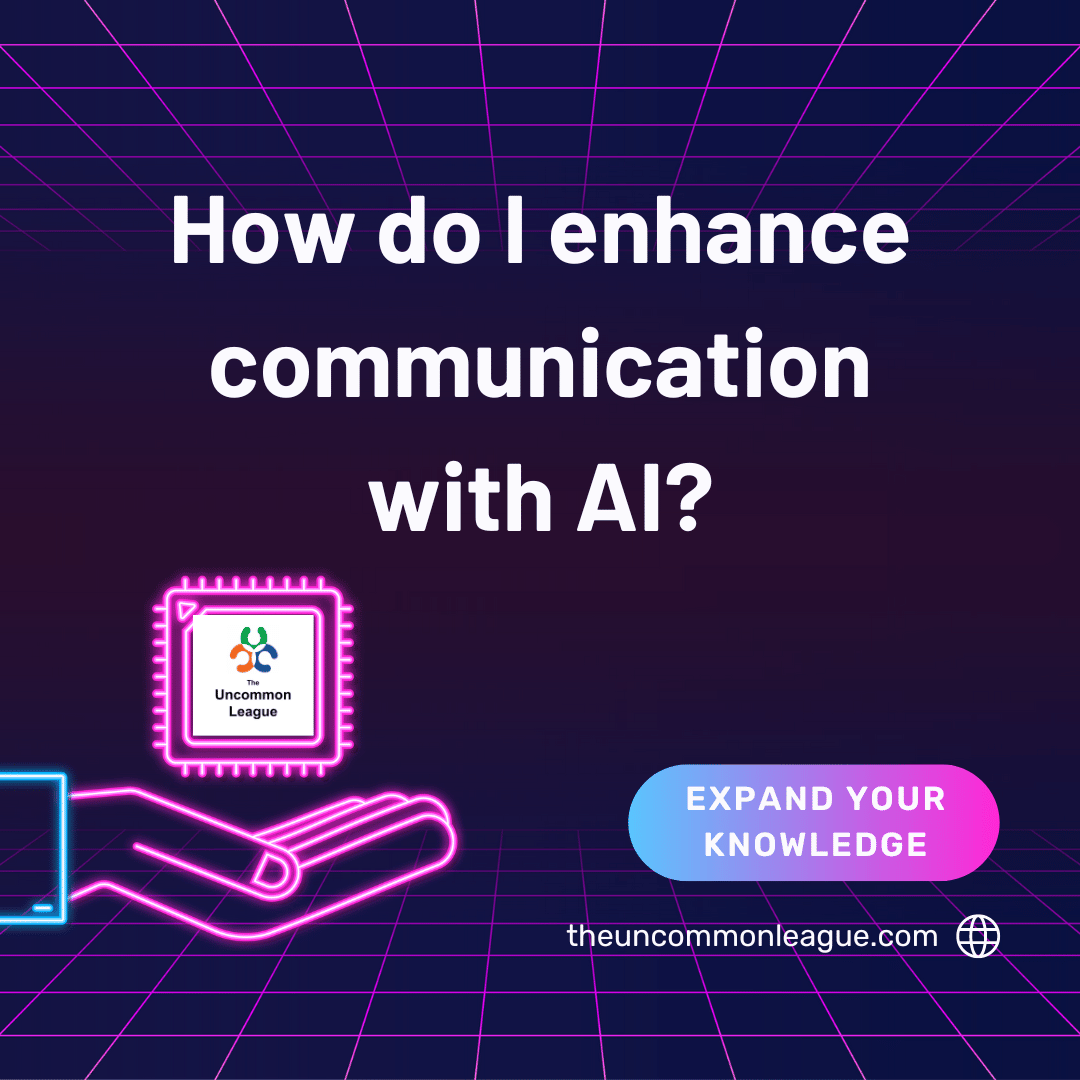How do I enhance communication with AI?
In today's fast-paced and interconnected business landscape, effective communication is paramount for the success of any project or initiative. With the advent of artificial intelligence (AI), organizations now have a powerful tool at their disposal to streamline and enhance stakeholder and team communication. From facilitating collaboration to automating repetitive tasks, AI offers a myriad of opportunities to optimize communication processes and drive productivity. In this article, we explore strategies, trends, and tools for leveraging AI to enhance stakeholder and team communication.
Understanding the Role of AI in Communication
Before delving into specific strategies and tools, it's essential to understand the role of AI in communication within organizational contexts. AI technologies, such as natural language processing (NLP), machine learning (ML), and chatbots, enable organizations to automate routine tasks, analyze vast amounts of data, and extract valuable insights. By harnessing the power of AI, organizations can augment human capabilities, improve decision-making, and facilitate more efficient communication channels.
Automating Routine Tasks: AI-powered tools can automate repetitive tasks such as scheduling meetings, sending reminders, and compiling reports, freeing up valuable time for stakeholders and team members to focus on more strategic activities.
Analyzing Data and Insights: AI algorithms can analyze large datasets to uncover patterns, trends, and insights that inform decision-making processes. By synthesizing complex information into actionable intelligence, AI enhances the quality and relevance of communication among stakeholders and teams.
Facilitating Natural Language Interaction: Natural language processing (NLP) technologies enable AI systems to understand and generate human language, facilitating natural and intuitive communication between humans and machines. Chatbots and virtual assistants powered by NLP can assist stakeholders and team members by answering queries, providing information, and guiding them through various processes.
Current Trends in AI-Enabled Communication
To effectively enhance stakeholder and team communication with AI, it's crucial to stay informed about the latest trends shaping this domain. Several trends are driving the evolution of AI-enabled communication within organizations:
Conversational AI for Collaboration: The rise of conversational AI platforms enables stakeholders and team members to interact with AI-powered assistants using natural language. These platforms facilitate real-time collaboration, task management, and decision-making by providing intuitive interfaces for communication and coordination.
Virtual Collaboration Spaces: Virtual collaboration spaces powered by AI technologies enable distributed teams to collaborate seamlessly across geographical boundaries. These platforms leverage AI algorithms to organize and prioritize information, facilitate discussions, and track project progress in real-time.
Personalization and Contextualization: AI-driven personalization and contextualization enhance the relevance and effectiveness of communication by tailoring content and recommendations to individual stakeholders' preferences and contexts. By leveraging user data and behavioral insights, AI systems can deliver personalized messages, notifications, and updates to stakeholders and team members.
Predictive Analytics for Decision Support: Predictive analytics powered by AI enable organizations to anticipate future trends, risks, and opportunities, thereby informing decision-making processes. By analyzing historical data and extrapolating patterns, AI algorithms can provide stakeholders and team members with actionable insights and recommendations.
Tools for Enhancing Stakeholder and Team Communication with AI
A variety of AI-powered tools and platforms are available to enhance stakeholder and team communication within organizations. These tools offer capabilities ranging from virtual assistants and chatbots to collaborative project management and analytics platforms:
Virtual Assistants and Chatbots: Virtual assistants and chatbots powered by AI technologies, such as IBM Watson Assistant, Microsoft Azure Bot Service, and Google Dialogflow, enable stakeholders and team members to interact with AI-powered assistants using natural language. These assistants can answer queries, provide information, schedule meetings, and automate routine tasks, thereby enhancing communication efficiency and productivity.
Collaborative Project Management Platforms: Collaborative project management platforms like Asana, Trello, and Monday.com leverage AI to streamline task management, facilitate team collaboration, and track project progress. These platforms offer features such as task assignment, deadline tracking, file sharing, and real-time communication, enabling stakeholders and team members to collaborate effectively irrespective of their geographical location.
Analytics and Insights Platforms: Analytics and insights platforms powered by AI technologies, such as Tableau, Power BI, and Google Analytics, enable organizations to visualize and analyze data to uncover actionable insights. These platforms leverage AI algorithms to identify patterns, trends, and correlations within large datasets, thereby informing decision-making processes and enhancing communication among stakeholders and team members.
Virtual Collaboration Spaces: Virtual collaboration spaces like Slack, Microsoft Teams, and Zoom facilitate real-time communication and collaboration among stakeholders and team members. These platforms offer features such as instant messaging, video conferencing, screen sharing, and file sharing, enabling stakeholders and team members to communicate effectively and collaborate on projects irrespective of their physical location.
April 15 - 17, 2024 (3 Days)
9:00 am (Central) until 5:00pm (Central)
Online - Live Instructor
Best Practices for Leveraging AI in Stakeholder and Team Communication
While AI offers immense potential to enhance stakeholder and team communication, adopting best practices is essential to maximize its benefits:
Define Clear Objectives: Clearly define the objectives and use cases for leveraging AI in stakeholder and team communication to ensure alignment with organizational goals and priorities.
Provide Training and Support: Provide stakeholders and team members with training and support to familiarize them with AI-powered tools and platforms and maximize adoption and usage.
Ensure Data Privacy and Security: Ensure compliance with data privacy and security regulations and implement measures to safeguard sensitive information and protect stakeholders' and team members' privacy.
Monitor Performance and Feedback: Monitor the performance and usage of AI-powered tools and platforms and solicit feedback from stakeholders and team members to identify areas for improvement and optimization.
Iterate and Improve: Continuously iterate and improve AI-enabled communication processes based on feedback, insights, and emerging trends to enhance effectiveness and efficiency over time.
The Role of AI in Communication
Leveraging AI to enhance stakeholder and team communication represents a significant opportunity for organizations to streamline processes, drive productivity, and foster collaboration. By understanding the role of AI in communication, staying informed about current trends, and leveraging the right tools and best practices, organizations can unlock the full potential of AI to facilitate seamless and effective communication among stakeholders and team members. As AI continues to evolve, embracing innovation and adopting a forward-thinking approach will be essential for organizations seeking to stay competitive in an increasingly digital and interconnected world.
Tags #businessanalysis #ai


